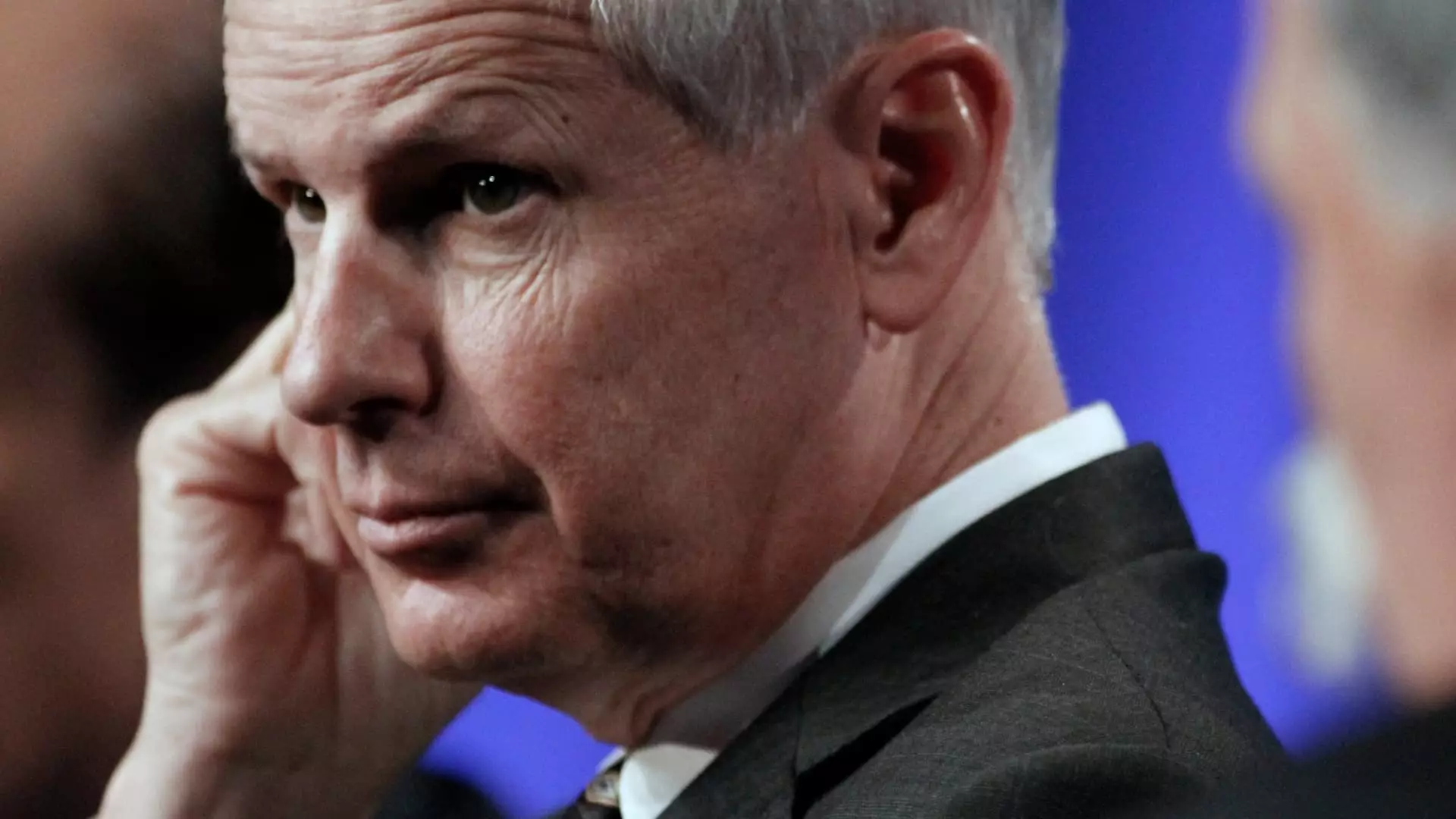For over four decades, Charlie Ergen has been a prominent figure in the pay-TV industry. As the founder of EchoStar, he has overseen its evolution and transformation in an era marked by rapid technological change and shifting consumer preferences. Currently, EchoStar is reportedly nearing a significant transaction involving the sale of Dish Network, its satellite TV provider, to DirecTV, a rival company owned by TPG and AT&T. This looming merger has far-reaching implications for both companies and the broader landscape of television distribution.
The concept of merging Dish with DirecTV is not new. Rumors of such discussions date back to 2002, a time when regulatory challenges thwarted previous attempts at consolidation. The contexts differ now, as both companies grapple with an existential threat posed by the proliferation of streaming services like Netflix and Disney+. Their subscribers continue to dwindle, prompting a renewed urgency in addressing financial pressures and realigning their business strategies.
At the heart of this potential negotiation is EchoStar’s pressing financial situation. The company faces approximately $1.98 billion in debt that is due for repayment in November. As of mid-2023, EchoStar’s liquidity was alarmingly low, with only $521 million in cash and cash equivalents on hand. Projections indicate negative cash flow for much of the coming year, raising critical concerns about the company’s viability.
EchoStar’s current financial distress amplifies the urgency for a strategic merger. Analysts have speculated that bankruptcy within the next few months is a concerning possibility—a viewpoint underscored by Craig Moffett of MoffettNathanson. The complexity of negotiations is compounded by the need for creditor approval, particularly given that EchoStar attempted to refinance some of its debt unsuccessfully just recently.
Structure and Potential Value of the Merger
To facilitate the sale, discussions suggest that DirecTV would execute an all-cash transaction, which could potentially value the combined entities at over $9 billion, including Dish’s digital operations, Sling TV, and associated liabilities. This transaction underscores the necessity of moving swiftly, given the adverse circumstances surrounding EchoStar’s financial health.
It’s notable that this deal does not involve the wireless spectrum that Dish Network has been aggressively acquiring. The company’s years-long strategy to pivot into telecommunications speaks to its recognition of changing consumer habits, but these assets stand outside the immediate framework for the proposed merger. Instead, the focus remains on strengthening traditional content distribution channels that have faced increasing competition from digital streaming platforms.
The Declining Landscape of Satellite Television
The traditional satellite sector, once a powerful cornerstone of television distribution, is now experiencing a steep decline. Both Dish and DirecTV have seen alarming subscriber losses in the wake of streaming services that offer more flexible viewing options. Dish Network currently has approximately 6.1 million satellite subscribers, alongside 2 million Sling TV users. In contrast, DirecTV has witnessed a drop from 15.4 million subscribers in 2015 to about 11 million today—a striking reflection of changing consumer preferences.
This ongoing trend underscores the necessity for both companies to adapt and respond strategically to the dynamic marketplace. DirecTV’s recent initiatives to promote its streaming services indicate a broader awareness within the industry about the future of content consumption. However, both companies remain tethered to outdated business models that rely heavily on satellite dishes and traditional cable bundles, making them vulnerable to the evolving landscape.
While discussions between EchoStar and DirecTV are classified as advanced, the road ahead is fraught with uncertainties. The potential merger would need to navigate an intricate landscape of creditors, market pressures, and consumer sentiment. Additionally, the historical context of prior merger attempts serves as a cautionary tale. Regulatory scrutiny remains a significant hurdle; with the complexity of such a deal, there’s no guarantee that it will receive the green light.
The proposed merger of Dish Network and DirecTV represents a critical juncture for both companies. As they endeavor to stabilize their financial standing amidst an unprecedented wave of competition, their ability to adapt, innovate, and efficiently execute this potential arrangement will determine their futures in a transforming television landscape. Whether this deal comes to fruition or not, one thing is clear: the pay-TV industry is in the midst of a transformational crisis that demands immediate and thoughtful action.

